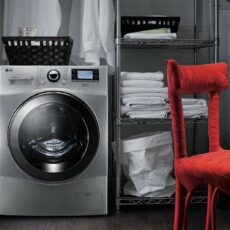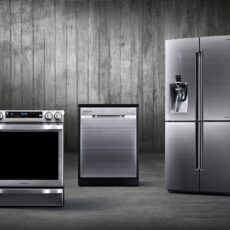A washing machine is an essential appliance in most households, but it can be frustrating when it malfunctions. Understanding the common failures and knowing how to address them can save you time and money. In this article, we will explore the most prevalent washing machine failures, delve into their causes, and provide effective repair methods. But remember, the best way to repair is to go to the professionals https://abc-appliancerepair.com/.
I. Electronics and Software Issues:
Modern washing machines rely heavily on electronic components and sophisticated software systems. However, these elements can sometimes be prone to malfunctions. Here are some common issues and potential solutions:
Suboptimal programming: Erratic behavior or incorrect cycle settings can often be resolved by recalibrating the machine or performing a factory reset.
Error codes and control panel malfunctions: Understanding the meaning of error codes displayed on the control panel can help diagnose and address specific issues. Resetting the control panel or replacing faulty components may be necessary.
II. Water Drainage and Supply Problems:
Problems with water drainage and supply are among the most frequent issues encountered in washing machines. The following failures are commonly observed:
Clogged drain pump or filter: Blockages in the drain pump or filter can impede proper water drainage. Cleaning or replacing these components can restore optimal functionality.
Faulty water inlet valve: A malfunctioning inlet valve may result in insufficient water supply or no water entering the machine. Replacing the valve can often resolve this issue.
III. Noise and Vibration during Operation:
Excessive noise and vibration during the washing machine’s operation can be disruptive and indicate underlying problems. Consider the following causes and potential remedies:
Imbalanced load: Unevenly distributed laundry can cause the machine to vibrate excessively. Ensuring proper loading and redistributing the load can minimize vibrations.
Damaged drum bearings or suspension system: Worn-out drum bearings or a faulty suspension system can lead to loud noises and vibrations. Replacing these components can restore smooth operation.
IV. Motor and Drive Failures:
The motor and drive components are critical for the washing machine’s functioning. Here are common failures and potential repair methods:
Burnt-out motor: Overheating or electrical issues can cause the motor to malfunction. Replacing the motor may be necessary in such cases.
Worn-out drive belt: A loose or worn-out drive belt can lead to slipping or the drum not spinning properly. Replacing the drive belt can often resolve this issue.
Understanding the common failures in washing machines and their causes empowers homeowners to tackle these issues effectively. While some problems can be addressed through DIY repairs, it’s important to recognize when professional assistance is necessary. By being proactive in maintaining and repairing your washing machine, you can extend its lifespan and enjoy uninterrupted laundry routines.








